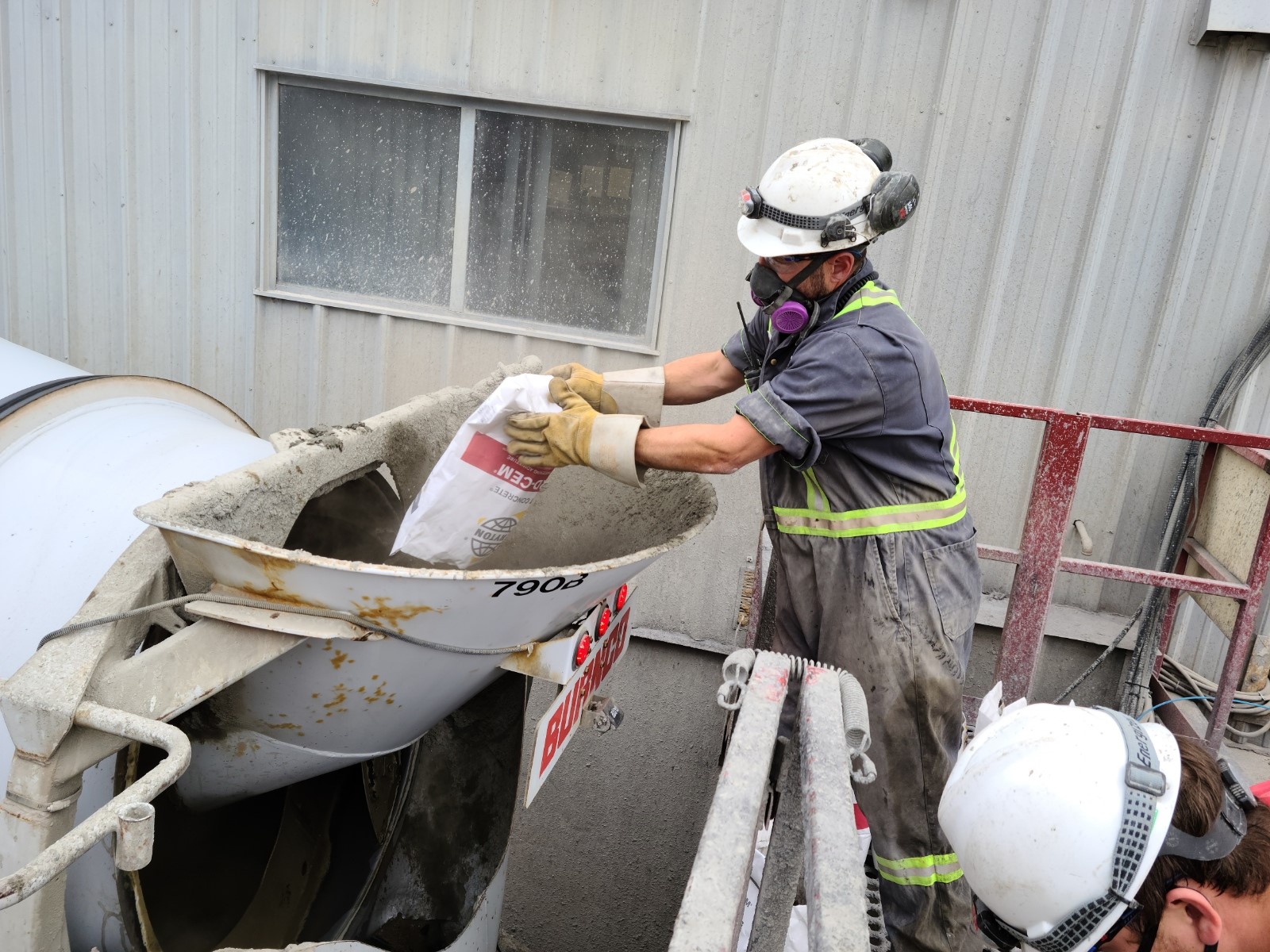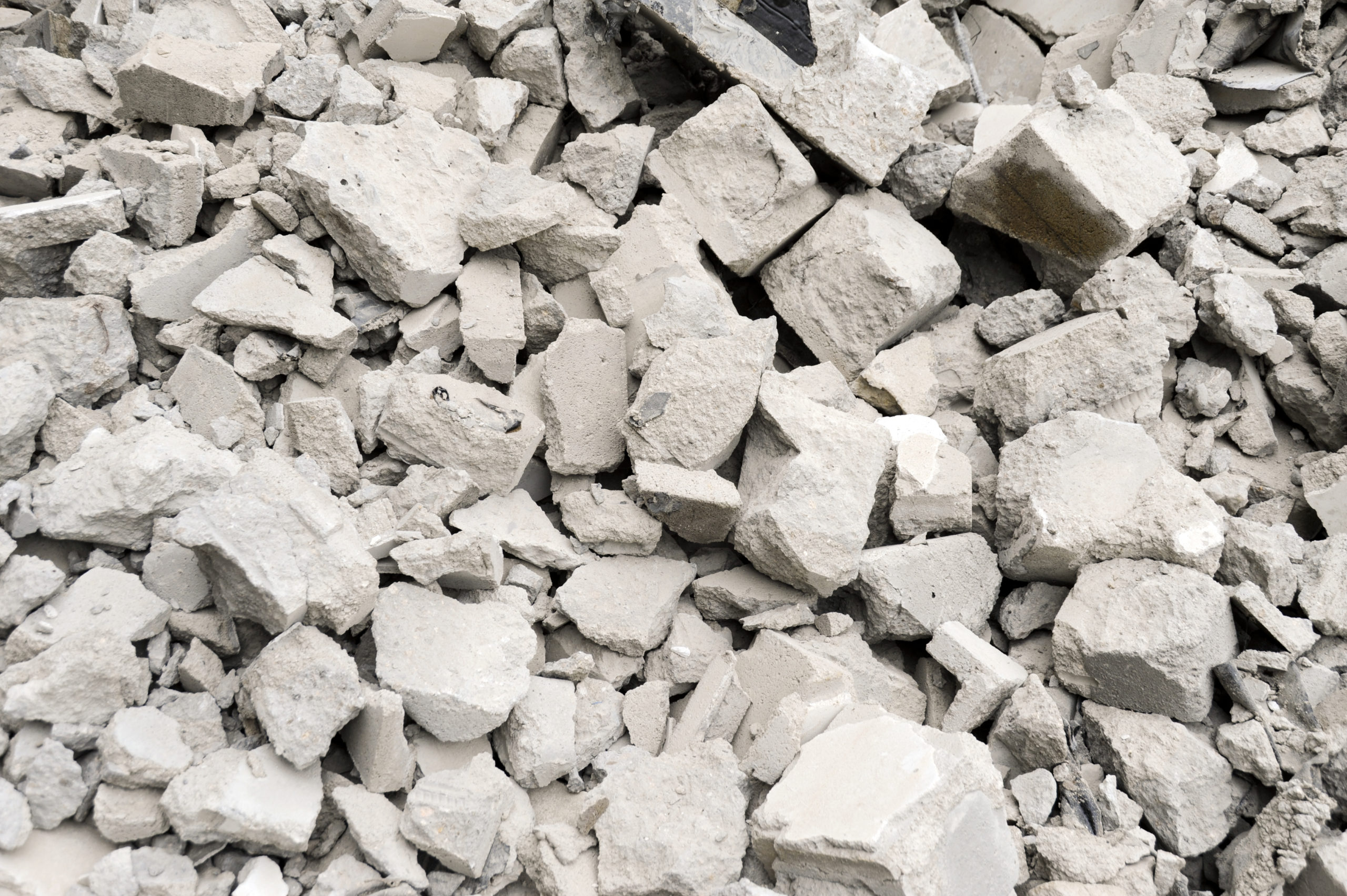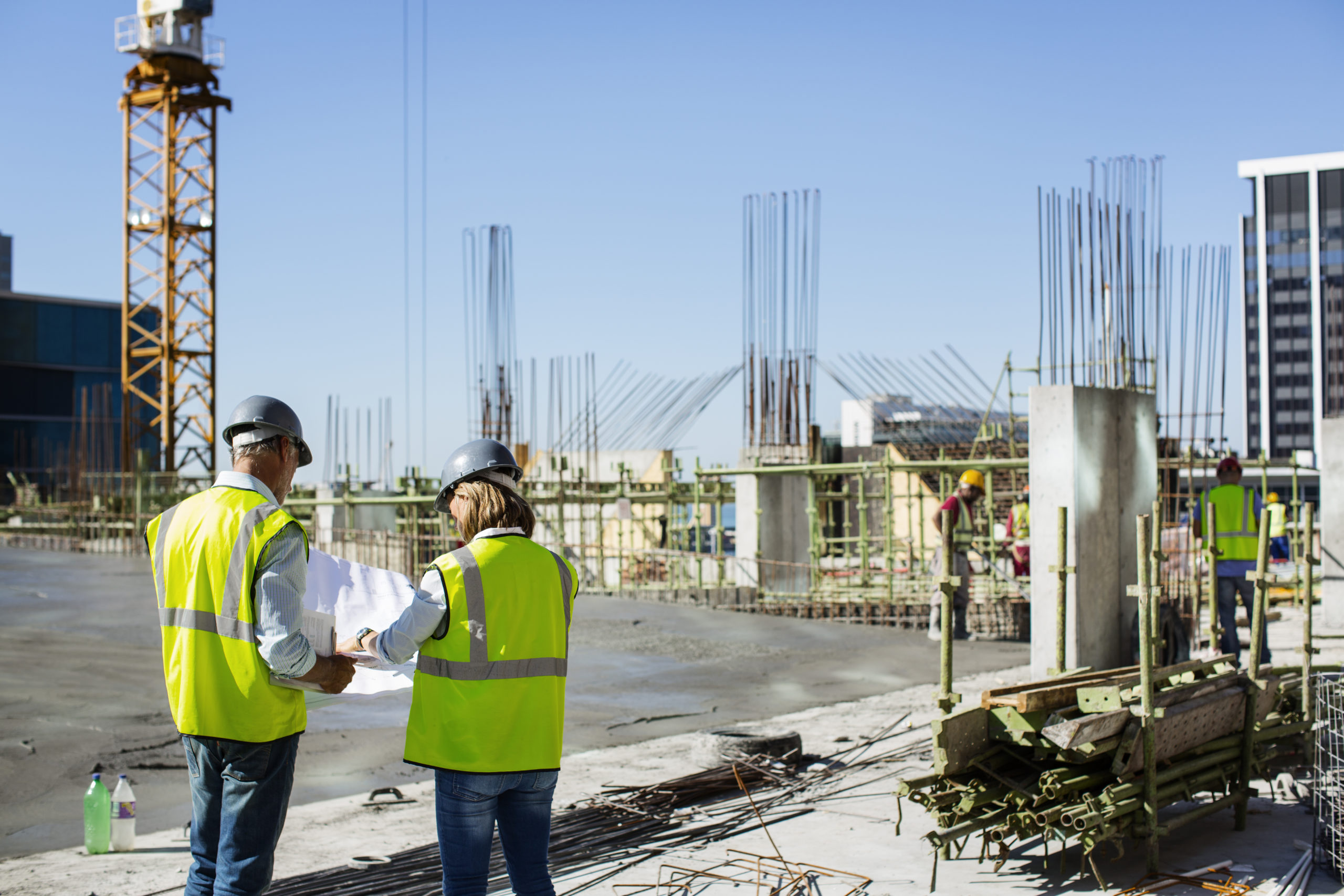While increasing the sustainability of concrete has understandably been a key focus for the construction industry, it’s not the only one. There’s also been a lot of discussion about the many millions of tonnes of waste the industry produces worldwide. It’s a growing problem that hasn’t shown signs of slowing down. And it’s led industry professionals to talk more about circular economy solutions.
After all, the number of resources being used up and left for waste is quickly outstripping how much material the planet can regenerate.
To prove this, the non-profit organization Global Footprint Network showed that each country would need multiple Earths to use up to cope with the amount of consumption occurring. The United States of America (USA) would be the highest, requiring at least 5.1 Earths. Just under that were Australia and Russia, which would require 4.5 and 3.4 Earths respectively.
But circular economy solutions can combat this concern. They provide people in all industries with an approach that centers the need for waste and pollution elimination and repurposing used materials.
While it does require an overhaul to how many construction projects are handled, it could be very advantageous to do so. For instance, Holcim’s CEO, Jan Jenisch, notes that it could reduce more than 30% of building carbon emissions and increase the number of job opportunities.
It’s an appealing thought. But how could those of us in concrete construction contribute to making it happen?
The Best Way to Start Is at the Beginning
How you approach your construction design from the very start will dictate how well your project will meet circular economy standards.
While Compelling, the Typical Starting Approach Won’t Cut It
Under the current construction climate, the typical approach is more about making a structure as durable as possible with sustainable products.
The hope there is that the structure will last for a lifetime and that when it does need to be demolished, it provides at least some items that can be reused. But that leaves repurposing materials to the end of its design, allowing more waste to be created than there needs to be.
It’s not an approach that all professionals want to adhere to, of course. But there are a number of barriers in place making it harder to change. A 2021 study on the USA region from the American Society of Civil Engineers highlights some of them:
- Lack of awareness of circular economy solutions
- Poor clarity on what circular economy solutions are
- Obstacles from existing codes and regulations
- Concerns surrounding the durability and resiliency of reused materials
- Time and cost concerns
- Lack of leverage to change a project’s approach
- No standardization and transportability of building components
- Difficulty with comparing the circular economy to other sustainable strategies
In short, it’s a systemic issue. The USA construction industry as a whole has yet to incorporate circular economy solutions into their standards.
They’re not alone either. With the rate of waste the construction industry produces worldwide, it’s clear that circular economy solutions have not yet been adopted globally.
Because of that, the industry’s current approach is more accessible. There’s less uncertainty about its execution or the time and cost involved with it. And none of the current codes and regulations will interfere with it.
But that fact ignores that all industry changes take a little getting used to and that the amount of construction waste currently created is unsustainable.
What’s more, a circular economy approach could very well save construction teams money in the end. After all, with its focus on eliminating waste at the start of construction, it minimizes the money spent on waste removal.
It’s true that getting to that point will be challenging initially. But once it’s standardized, it will be a much less significant concern. Someone just has to take that first step.
Consider a Design for Disassembly Approach
One of the best ways to ensure waste reduction doesn’t fall to the wayside of your construction is with a design for disassembly (DfD) approach. It’s a concept that emphasizes designing and planning a building from the start with deconstruction in mind so that its materials can be easily reused for future construction.
While DfD is not fully standardized, there are guidelines on how to achieve it. These include the following actions:
- Select quality durable materials that last long and can withstand disassembly
- Make sure they have recycling potential if they won’t be reused
- Ask the suppliers about take-back programs or cradle-to-cradle certification
- Use salvaged goods in structural and finishing materials
- Archive information on project building materials for reference
- Choose screwed or nailed bolted connections over glues or sealants
- Look for fasteners and connection points that have simpler forms
- Pick fasteners that can be disassembled easily with standard tools
- Ensure fasteners can be easily accessed
- Design the project so materials don’t rely on each other much
- Separate mechanical, electrical, and plumbing systems from walls and other materials
As you can see, these are all tangible steps that would make reusing construction materials that much easier.
And if you choose to make use of one or more of them, your construction project will almost certainly benefit from that. Not only will your team have to spend less money on waste removal, but you’ll also reduce your project’s environmental impact. It won’t create as much waste, and it will even help reduce raw material consumption in the future.
A Key Part of That Is Choosing the Right Materials
When tackling the design of construction with DfD, you’ll find the choice of materials becomes extremely significant. That remains the case no matter where you are in the construction hierarchy.
For a better idea of what that looks like specifically for concrete construction, let’s look at some sustainable material options.
Cement Producers Can Help by Replacing Their Use of Traditional Fossil Fuels
Concrete wouldn’t be the same without its main component: cement. But producing that material can be quite carbon-intensive. In fact, doing so contributes to around 8% of the world’s total carbon emissions.
Part of the reason for that is the fuel that heats up the kiln for cement production. Traditionally, it often consists of fossil fuels like coal and petcoke. These produce a significant amount of carbon emissions.
But there are circular economy solutions for this: alternative fuels. For instance, it’s possible to use industrial by-products, such as used tires. That reuses materials that would have gone into a landfill otherwise and provides a less carbon-intensive fuel.
But if that’s not readily available, cement producers could also use waste or biomass instead. If enough producers shifted to such options, they could end up decreasing the carbon emissions of global cement production by 9% by 2050.
There Are Also Industrial By-Products Out There That Can Enhance Concrete Mixes
While you can mitigate the emissions of cement production, you can’t eliminate them entirely. So another way to reduce carbon emissions and eliminate waste is by partially replacing cement with different materials.
The Most Well-Known Are Supplementary Cementitious Materials
Often by-products from other industries, such as fly ash and ground-granulated blast-furnace slag, supplementary cementitious materials (SCMs) are a go-to solution for industry professionals. Not only can they partially replace cement used in concrete, but they can also offer a number of other advantages:
- Greater later-age concrete strengths
- Reduced permeability
- Improved concrete durability
- Better resistance to sulfates
- Less heat of hydration
- More LEED points
That all depends on the SCMs used in some cases of course. Each one has their own particular properties. And they aren’t always compatible with every type of concrete mix.
It’s why Kryton Technical Director Alireza Biparva recently wrote for the publication Concrete Plant International about the care needed for mixing SCMs with permeability-reducing admixtures (PRAs) in concrete.
If professionals aren’t careful, they could end up with SCMs and a PRA that both require calcium hydroxide to activate. With calcium hydroxide being a limited resource in concrete, that could cause both materials to perform poorly. But many SCMs need it. So it might be better to use a PRA that does not need calcium hydroxide to react. For example, there’s our Krystol Internal Membrane™ (KIM®), which only reacts to water and unhydrated cement particles.
It all goes to show that while SCMs are great sustainable circular economy solutions, they still need to be chosen and applied with care.
There Is an Admixture That Could Be of Use Too
Another circular economy solution to consider is the integral hardening admixture Hard-Cem®. It is manufactured with industrial by-products that would have normally ended up in the landfill, and its purpose is to make concrete more resistant to abrasion and erosion.
But how exactly does that work?
Well, once added to a concrete mix, the hardening admixture permeates it with a finely ground mineral-metal alloy.
This material comes with a unique chemical microstructure that makes up for the weaknesses in the concrete’s cement paste. On its own, the paste is made up of interconnected pores and capillaries. These are strong in compression. But they are weak to abrasive and erosive forces. Hard-Cem’s material fixes that by adding an amorphous quality to the paste’s structure. That makes it tougher and more stable, increasing its ability to resist deformation.
This not only doubles the wear life of the concrete even under harsh conditions. But it also eliminates the need to add extra cement for more durable concrete.
And Don’t Forget That Concrete Can Be Recycled
Concrete is the second-most widely used material in the world, so it’s important to consider that concrete itself can also be repurposed. With a finite life span like any material, structures made with it will eventually need to be demolished. But the concrete can be removed and broken down into what is known as recycled concrete aggregate.
Much of this is best-suited for creating pavement. But it can also be added to a new concrete mix to help develop future structures.
Just Ensure That It Uses the Right Waterproofing
Of course, when producing recycled concrete aggregate, there needs to be a quality control of sorts. Not all concrete can be recycled. Only concrete that hasn’t been contaminated. So that means removing other materials like reinforcing steel, asphalt, soil and clay balls, chlorides, glass, gypsum board, sealants, paper, plaster, wood, and roofing materials.
It also means you need to be careful about your concrete’s waterproofing. After all, many externally applied waterproofing products such as membranes contain crude oil products like asphalt. So using them can prevent your concrete from being recycled.
That’s why you are likely better off using integral waterproofing like KIM, which protects your concrete from water ingress while ensuring it can still be recycled in the end.
These Are All Circular Economy Solutions to Encourage in Construction
Concrete construction has a lot to offer when it comes to sustainability. And it’s no different when you consider circular economy solutions. It just takes a shift in focus. With the right approach, materials, and waterproofing, concrete construction can reuse more than it wastes.











